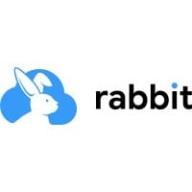

IBM Turbonomic and Rabbit compete in the automation and optimization sector. IBM Turbonomic appears to have an advantage with its strong performance optimization capabilities, while Rabbit offers compelling infrastructure automation and flexibility.
Features: IBM Turbonomic offers dynamic resource automation, value in multi-cloud environments, and robust performance optimization across various settings. Rabbit provides scalable infrastructure automation, customization emphasis, and flexibility for adaptable solutions.
Ease of Deployment and Customer Service: IBM Turbonomic is known for simple deployment and responsive customer service, while Rabbit supports adaptable deployment with extensive support options, although it may need more initial configuration.
Pricing and ROI: IBM Turbonomic features competitive setup costs with a long-term ROI focus on efficient resource utilization. Rabbit requires a higher initial investment but promises ROI by enhancing operational efficiencies through deep automation capabilities.

IBM Turbonomic offers automation, planning, and right-sizing recommendations to streamline resource management, improve efficiencies, and optimize costs across virtualized environments and cloud platforms.
IBM Turbonomic is valued for its capability to optimize resource allocation and monitor virtual environments efficiently. It facilitates automated decision-making in VM sizing, load balancing, and cost optimization for both on-premises and cloud deployments. Users can leverage insights for workload placement, ensure peak performance assurance, and effectively right-size across VMware and Azure. The ongoing transition to HTML5 aims to improve visual and navigational ease, while expanded reporting features are anticipated. Opportunities for improved training, documentation, and integrations enhance platform usability and functionality.
What Are the Key Features?In finance, IBM Turbonomic aids in maintaining platform efficiency during market fluctuations. Healthcare organizations leverage its capability for resource optimization during high-demand periods to enhance patient care support. Retailers use it for planning in peak seasons, ensuring resources align with fluctuating demand to maintain performance continuity.
Rabbit is designed to efficiently handle asynchronous messaging, facilitating seamless communication between distributed services. Known for its robust performance and scalability, Rabbit is an integral component for organizations that rely on reliable message delivery.
Rabbit provides a reliable solution for managing high-throughput messaging workflows. Its architecture supports different messaging protocols, catering to complex system requirements with ease. While Rabbit is praised for its stability and flexibility, some reviews suggest areas for improvement such as user documentation and the need for more intuitive debugging tools. These insights reflect its adaptability in diverse technological environments.
What are Rabbit's key features?Rabbit fits into industries like finance and telecommunications, meeting specific demands for secure and efficient data transmission. Its deployment is particularly impactful in sectors requiring real-time data processing, ensuring seamless integration with existing infrastructures while providing reliable service operations.
We monitor all Cloud Cost Management reviews to prevent fraudulent reviews and keep review quality high. We do not post reviews by company employees or direct competitors. We validate each review for authenticity via cross-reference with LinkedIn, and personal follow-up with the reviewer when necessary.